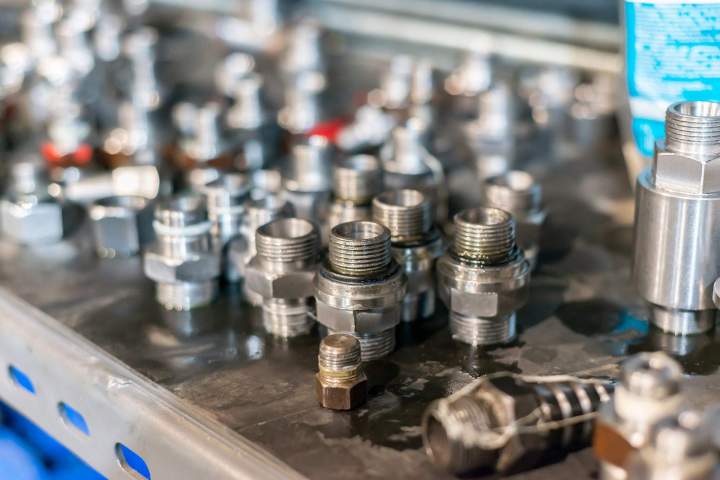Essential Hydraulic Parts Every Mechanic Should Know
Hydraulic Parts Admin / October 13, 2025

Understanding Hydraulic Systems
Before exploring specific components, it’s crucial to grasp how hydraulic systems function. These systems use fluid under pressure to transmit energy, allowing machines to operate various mechanisms. The basic principle relies on Pascal’s law, which states that pressure applied to a confined fluid is transmitted undiminished in every direction. This property is what makes hydraulics so powerful for applications ranging from automotive brakes to heavy machinery.
Hydraulic Fluid
Role and Types
Hydraulic fluid is the lifeblood of any hydraulic system. It not only transmits power but also lubricates and cools the system. There are several types of hydraulic fluids, including mineral oils, water-based fluids, and biodegradable options. Each type has distinct properties suited for different environments and applications.
Maintenance Considerations
Regular monitoring of hydraulic fluid is imperative. Mechanics should be aware of fluid levels, contamination, and viscosity, as these factors can significantly affect system performance. Contaminated fluid can lead to wear and tear on components, making routine checks a priority.
Hydraulic Pumps
Functionality
Hydraulic pumps are responsible for converting mechanical energy into hydraulic energy. They create flow and pressure in the hydraulic system, enabling the movement of actuators and other components. There are various types of pumps, including gear pumps, piston pumps, and vane pumps, each suited for different applications.
Common Issues
Understanding potential issues with hydraulic pumps is essential. Mechanics often encounter problems such as cavitation, where vapor bubbles form in the fluid, leading to pump damage. Regular inspection and maintenance can prevent such failures and extend the life of the pump.
Hydraulic Cylinders
Design and Purpose
Hydraulic cylinders are pivotal in converting hydraulic energy back into mechanical energy. They consist of a cylinder barrel, piston, and rod, and are used in applications ranging from construction equipment to automotive lifts. The design allows for linear motion, making them indispensable in various machinery.
Troubleshooting
Common issues with hydraulic cylinders include leaking seals and piston wear. Mechanics should be adept at identifying these problems, as they can lead to system inefficiencies. Regular inspections can help catch these issues early, ensuring smooth operation.
Hydraulic Valves
Types and Applications
Hydraulic valves control the flow and direction of hydraulic fluid within a system. They can be categorized into several types, including directional control valves, pressure relief valves, and flow control valves. Each valve serves a specific purpose, helping to regulate system functions.
Importance of Proper Functioning
Malfunctioning valves can lead to erratic behavior in hydraulic systems. Mechanics must be skilled in diagnosing valve issues, such as sticking or leaking. Understanding the operation of these valves can significantly impact the overall performance of hydraulic machinery.
Hydraulic Hoses and Fittings
Functionality
Hoses and fittings are critical for connecting various components in a hydraulic system. They transport hydraulic fluid under high pressure, making their integrity crucial for system safety and performance. Hoses are typically constructed from reinforced materials to withstand extreme conditions.
Inspection and Replacement
Regular inspection of hoses and fittings is essential to prevent leaks and failures. Mechanics should be trained to recognize signs of wear, such as cracks or bulges in hoses. Timely replacement of damaged components can prevent costly downtime and ensure operational safety.
Familiarity with hydraulic parts saves time and prevents costly mistakes. A Parts Supplier can provide reliable components for all your hydraulic needs.